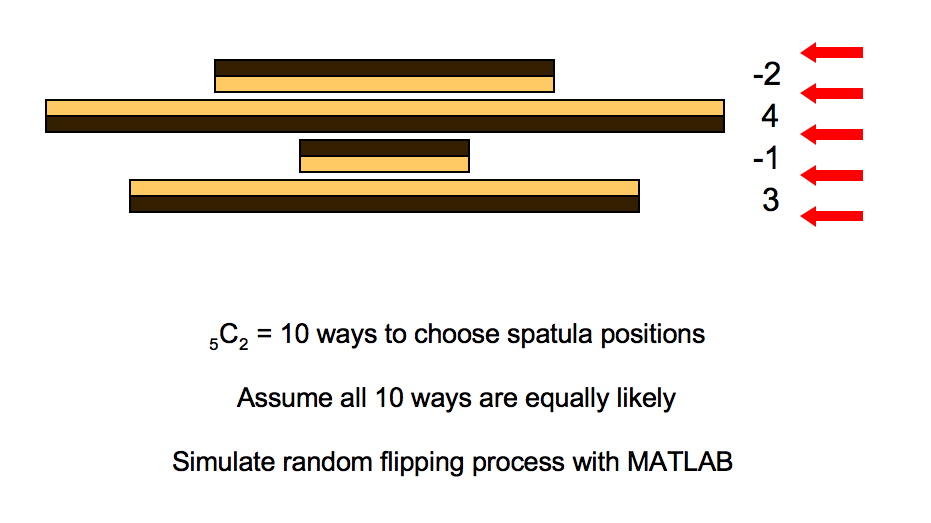Modeling pancake flipping
From 2006.igem.org
(Difference between revisions)
| (2 intermediate revisions not shown) | |||
| Line 1: | Line 1: | ||
{| | {| | ||
|[[Image:dc_model1.jpg]] | |[[Image:dc_model1.jpg]] | ||
| - | |||
|} | |} | ||
| + | MATLAB code for simulating the pancake problem is freely available on our Wiki. | ||
| + | |||
| + | Our initial simulations assume that all possible flips are equally likely. However, our MATLAB code is easily adaptable to other assumptions, allowing us to investigate whether smaller or larger numbers of pancakes (i.e. shorter or longer segments of DNA) might be more likely to be flipped. | ||
Latest revision as of 17:56, 30 October 2006

|
MATLAB code for simulating the pancake problem is freely available on our Wiki.
Our initial simulations assume that all possible flips are equally likely. However, our MATLAB code is easily adaptable to other assumptions, allowing us to investigate whether smaller or larger numbers of pancakes (i.e. shorter or longer segments of DNA) might be more likely to be flipped.